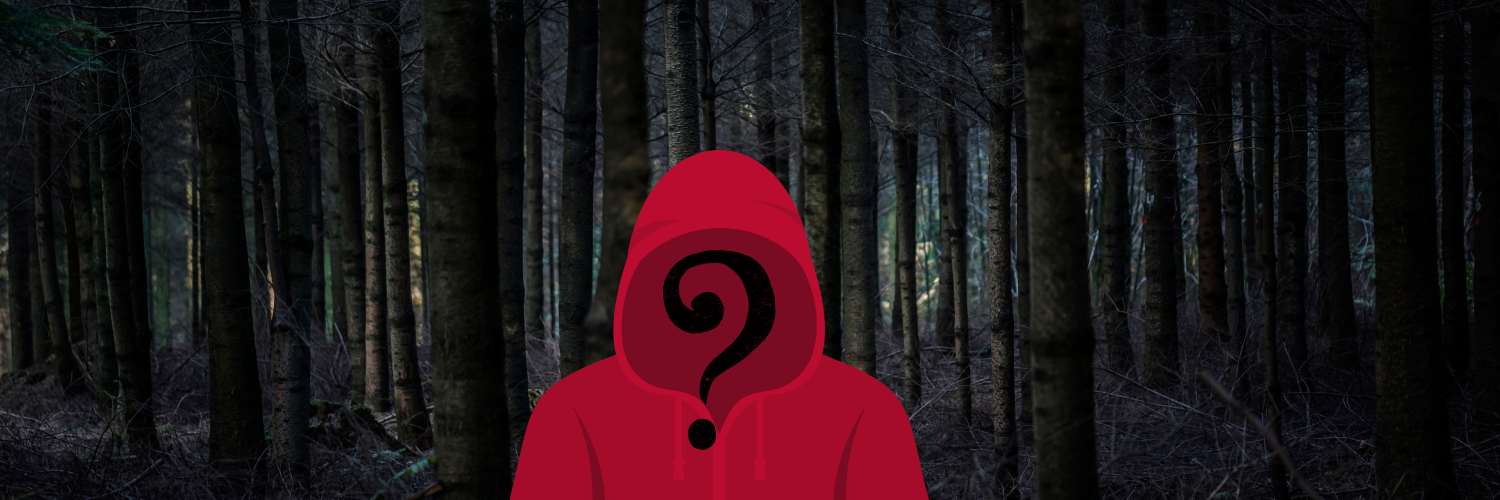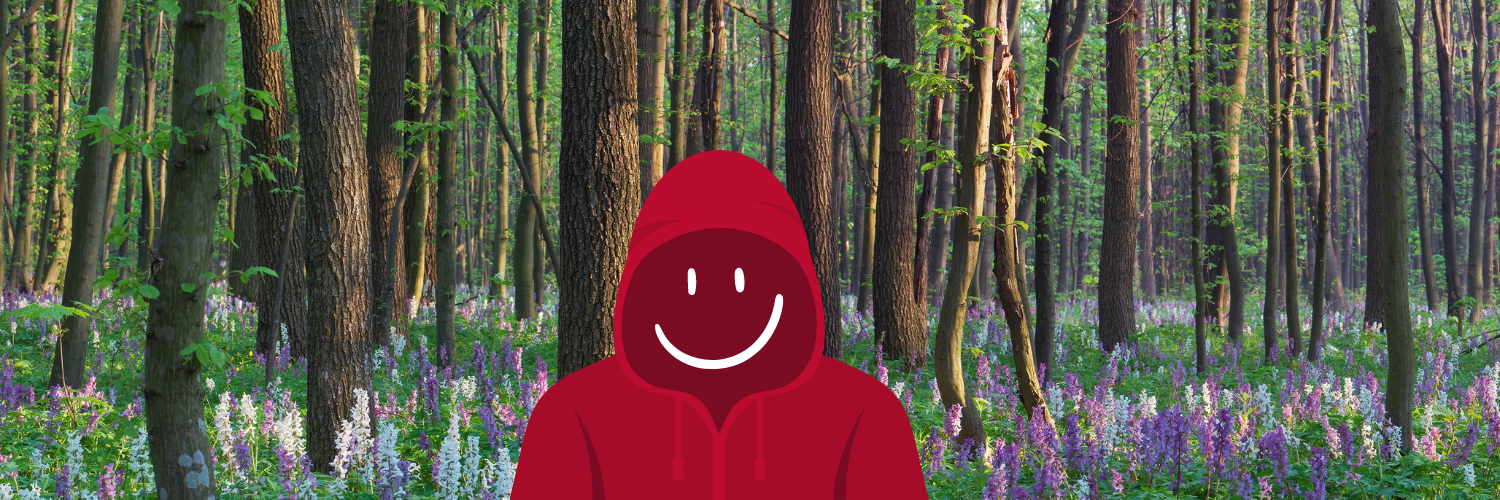An Alternative Forest Tale: Red vs the Wolf
Once upon a time there lived a young woman called Red. As a forester she wore the correct safety gear as well a red hoody to keep her warm in cool and frosty seasons. One day the owner of the estate asked Red to go check over the trees deep in the old dark forest, a part of estate that hadn’t been visited for many years. Red lived on the estate and had no fear and so set out immediately through the countryside.

As she got further into the wood, it got darker and darker and the brambles got thicker and thicker. Without a forester to care for them, younger trees were struggling to get through the dense thorns and without light and air the older trees were becoming choked and diseased. Eventually, she found herself in an area that was so dark the ground was almost bare of plants or saplings. Looking up she realized she was standing in the great shadow of a Wolf Tree.
She reached out to the huge trunk of the tree, twisted and rising up and out further than the eye could see. She spoke to the Wolf and the Wolf whispered back.
“What big branches you have, Wolf!”
“All the better to feed you with. My branches have held nuts and nests for many years.”
“What low boughs you have, Wolf!”
“All the better to shelter you with. Many deer and cattle have hidden underneath over time.”
“What a wide roots you have, Wolf!”
All the better to work through the soil. Many rainy seasons have come and gone without the estate flooding thanks to my roots.”
Red, paused and considered the Wolf, as she walked away through the woodland she thought of all the timber she could harvest from the great tree, of the new saplings she could plant in its place, and the profit that might come. The Big Bad Wolf seems to be devouring so much light and resources from the woodland but the tree had stood for many generations. Should she really chop it down?
The other trees in the woodland were spindly and sick. She wouldn’t get much money for small, disease-ridden timber and it would take her months or even years to clear away the brambles ready for new saplings. Red didn’t know what to do.
Help Red decide what she should do next!
She returned that night, and with practiced aim brought the chainsaw down against the bough of the Wolf Tree. With effort and the Wolf’s great creaks and groans, the tree fell hard against the earth. That was the end of the Wolf…
Eventually Red was able to plant new trees in the place of the Wolf, but it took many, many years. The dense brambles that had been held back by the tree exploded into the extra space making planting more trees tricky as the saplings struggled to survive. Red persisted, continuing to work through the forest. By picking a diverse range of tree species Red tried to ensure the possible diseases in other areas of the wood didn’t spread too far and that the trees worked in harmony with each other, for their long-term benefit. For awhile, although the light flooded in from above the forest floor was not easier to work with, and didn’t hold the biodiversity it once had.
Is this a happy ending or a tragedy? Red had considered the space, the timber, the potential saplings, but not the history of the tree, the benefits of it’s twisted boughs and shedding bark, the hollows made homes by birds and wildlife, the fungi and microflora that relied on the ecosystem the tree had created.
Not all wolves are the same; a tree named Wolf is called that because of the belief that the trees were consuming too many forest resources and so like the giant animals of fairy tales they were removed from the habitat. However, like wolves we should not simply banish them from the landscape or else we lose the benefits of these defining features of our landscapes.
Red waited until morning and returned to the dense dark woodland. She worked hard day and night to clear away the thorny brambles and diseased trees. She cleared and she cleared and every time she did the brambles kept coming back. But she kept going and eventually the brambles grew smaller and less dense.
Working skilfully with her chainsaw, splitting wedge and axe, Red created great big stacks of firewood. Red knew (as every good forester does) that the wood would have to be left to dry for a year or more in order to reduce smokey air pollution from the burning wood. But eventually there would be enough to heat the estate buildings and even some to sell to people in the local village.
As Red worked she began to notice a change in the woodland. Colorful woodland flowers such as bluebells, anemones and foxgloves started to appear in the sunny new woodland glades and tracks she had created. Woodland birds and animals, once a rare sight in the forest, began to return and the air was buzzing with bees and butterflies. The trees she planted started to grow strong and tall and would, one day make great timber to build houses and furniture.
One day, after she had been working in the woodland for several years, Red returned to the Wolf. She looked up and down the great, old tree and saw nuts and nests, nooks and crannies, roots and shoots all teaming with life. She put her hand on the trunk and whispered to the Wolf.
“You’re not Big and Bad at all”
Red’s hard work and determination created a healthy habitat around the old Wolf tree. She considered the long-term benefits of growing healthy trees, rather than leave the overgrown woodland to suffer because it would be hard work. She also considered the history of the tree in the landscape and the ecosystem it created. Red took an overgrown unprofitable woodland and created something that will benefit people and wildlife for generations to come.

Forestry and woodland management is not always simple, and it can be hard to pick the right choice.
We hope you have enjoyed our alternative fairy tale, and learnt something along the way.
If you’d like to learn some more about some spooky folklore check out the links below. Happy Halloween everyone!
Read more…
- Leshy: the Forest Spirit who could take children who were cursed by their parents away to the forest people.
- Nightjars: a bird once believed to feed on goats.
- Knock on wood to chase off evil spirits.
- Stories of the Woodpecker from across the globe.

